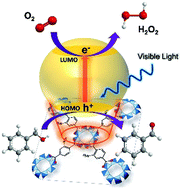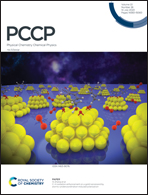Metal–organic framework-based nanomaterials for photocatalytic hydrogen peroxide production
Abstract
As an environmentally friendly and renewable energy source, hydrogen peroxide (H2O2) could be produced photocatalytically through selective two-electron reduction of O2 using effective photocatalysts. Metal organic frameworks (MOFs), as hybrid porous materials consisting of organic linkers and metal oxide clusters, have aroused great interest in the design of effective catalysts for photocatalysis under visible light irradiation due to their unique properties, such as large surface area, good chemical stability, and diverse and tunable chemical components. In this perspective, we highlight our recent progress in the application of various MOF-based nanomaterials for photocatalytic H2O2 production from the selective two-electron reduction of O2 in a single-phase system (acetonitrile) and two-phase system (water/benzyl alcohol). Photocatalytic H2O2 production in the single-phase system achieved a higher activity using NiO as a cocatalyst of the MOF rather than Pt. Photocatalytic H2O2 production in the two-phase system using various hydrophobic MOFs showed further improved activity compared to the single-phase system. It has been possible to design a hydrophobic MOF-based photocatalyst with high activity and stability under recycling conditions. These studies gathered in this perspective revealed the novel application of MOFs in the field of energy production.

- This article is part of the themed collections: PCCP Perspectives and 2020 PCCP HOT Articles


 Please wait while we load your content...
Please wait while we load your content...